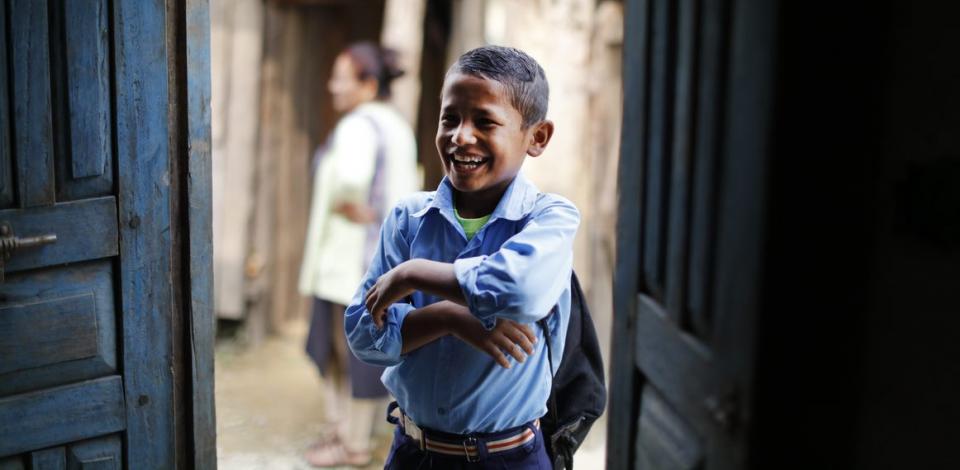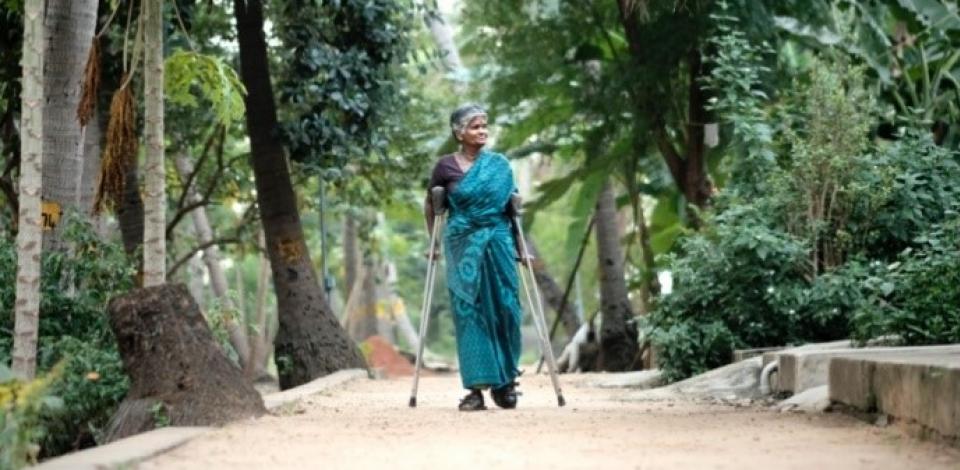Exercise 1
The aim of this exercise is to involve participants and warm them up in the team. The exercise helps participants to reflect on the meaning of stigma and how this relates to health. See Annex Guide 1: Training exercises and tips for further details.
Stigma is a negative response to human differences. These may be obvious visible signs or differences in behaviour towards stigmatised persons, or they may be more subtle actions of well-meaning people who are unaware of the potentially harmful effects of their responses. If these stigmatising behaviours or responses are related to a health condition, we call this ‘health-related stigma’.
The people who are perceived to be ‘different’ are often labelled, for example as a ‘leprosy sufferer’ or ‘mental case’. Society tends to have stereotypes that go with these labels, particular views of what such a person is like (in the case of neglected tropical diseases, very contagious, cursed, sinful, rejected by society; in the case of mental illness, dangerous, unreliable and not able to take decisions). When such a stereotype is attached to a label, the person is reduced to the stereotype, and people tend no longer to see the actual human being. People then tend to distance themselves by using expressions such as ‘people like that’ – pitching ‘us’ versus ‘them’. This in turn often leads to loss of status of the stigmatised person and to actual discrimination.
Stigma can take on different faces. It may be very subtle, particularly in the early stages, for instance when people start asking questions of a person’s illness, look at them suspiciously or make insensitive remarks that often do not match reality (e.g., ‘He must have done something wrong to deserve this’). At the other end of the spectrum is overt negative behaviour, often called discrimination.
Sarah is 19 years old. She works as a housemaid. Her employer hears that she is getting treatment for leprosy. The next time she comes to work, he calls her and says, ‘You don’t have to come to work anymore. We don’t need your services.'
This is a form of stigma often called discrimination, but also sometimes called experienced or enacted stigma.

We talk about discrimination when people are treated differently because of their health condition or other perceived differences, such as gender and ethnic background. Discrimination is an act of stigmatisation. In this case Sarah got fired because she has leprosy, and not because of any inability to perform. Discrimination may occur in different settings, such as the community, at home, in the workplace, in the media, in legislation and in health and social services.
Jonathan is 34 years old. He sells food in the market. He has just been diagnosed with lymphatic filariasis which has caused his leg to swell (called elephantiasis). He is now concerned that if people find out about his condition, nobody will buy his food.
This is another form of stigma; it is called ‘anticipated stigma’, also called ‘felt’ or ‘perceived’ stigma.
Anticipated stigma is the perception, expectation or fear of discrimination and the awareness of negative attitudes or practices in society. This may be felt by the affected person. Sometimes, an action may be interpreted as stigmatising, while the intention was completely different. For example, someone may leave the room for a totally unrelated reason when a person with a stigmatised condition enters, but the latter feels it is because of them, and is distressed. The net effect often depends on the perception, not necessarily on whether the perception was accurate.
Anand is 27 years old and was diagnosed with leprosy a year ago. People in his community believe leprosy is a curse: only those who have committed sins in their past get leprosy and they should not participate in religious festivals. Anand starts believing this about himself. He stops going to the temple, does not leave his house anymore and believes he must be a bad person.
This is yet another form of stigma, called internalised stigma.

When someone who holds negative stereotypes about people with certain conditions, for example mental illness, is diagnosed with a mental illness himself or herself, this person may start to apply these stereotypes to himself or herself. As a result, they may experience loss of self-esteem and dignity, and they may feel fear, shame, hopelessness and guilt. They may consciously or unconsciously accept diminished expectations about themselves and start behaving the way people expect them to behave. In the end, this leads to social exclusion in the same way as discrimination. Participation restriction and social exclusion are examples of the impact of stigma.
See the following video:
These examples of stigma are only a few of the many ways people can perceive stigma. This can occur because someone has a health condition such as leprosy or because of other (perceived) differences, such as gender, skin colour or sexual orientation.
People often think of stigma as a mark or blemish: a more permanent characteristic of a person. However, research into the experiences of stigmatised persons and the effect of interventions to reduce stigma has shown that stigmatisation is a dynamic social process. This process can differ from person to person, and from context to context, depending on the culture, the disease, a person’s status or character and the way the condition develops. This suggests that stigma is not permanently fixed to individuals or groups, as a person who is stigmatised in one context (say in school) may be accepted in another context. Similarly, some people may be stigmatised for more than one reason. Common examples are women, poor people or HIV-infected persons who use drugs or who are homosexual. Such ‘multiple stigma’ are also known as ‘layered stigma’, as if a person is covered in several layers of stigma.

 Infolep
Infolep